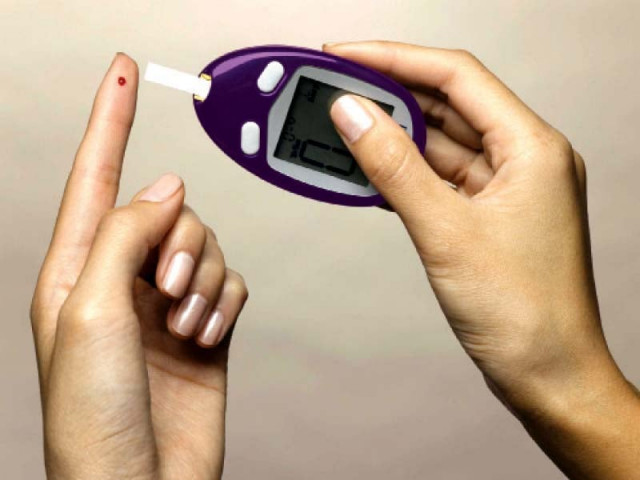Healthcare: ‘Pakistan ranked 7th in diabetes prevalence’
Student volunteers organised by GCUF to raise awareness of the disease.

The diabetes has affected 240 million people worldwide and the number could increase up to 380 million by 2025, says VC GCUF.
As many as 6.9 million people suffer from diabetes in Pakistan and the figure could go up to 11.5 million by 2025 if steps are not taken now to control the disease, Government College University, Faisalabad (GCUF) Vice Chancellor Zakir Hussain said on Thursday.
He was speaking at a seminar titled, Diabetes and the Month of Fasting, organised by the Directorate of Medical Sciences here at the GCUF.
Hussain said the disease affected 240 million people worldwide and the number could increase up to 380 million by 2025. He said medical experts, social workers and educationists needed to work together to control the disease.
He said people with Type-1 diabetes were recommended not to fast. He said those with Type-2 diabetes could fast if their doctors advised.

Dr Surayya Zakir, the chief guest, said diabetes needed to be controlled by adopting proper diets and exercise. She said in Ramazan, the best time to exercise was 20-30 minutes before sehar and 20-30 minutes after taraveeh.
She said sweet potatoes were good for diabetes patients. She said a controlled level of sugar should be taken by those fasting. “80-130 mg of sugar before sehar, 80-120 mg after iftarf and 140 to 160 mg two hours after iftar are sufficient,” she said.
Dean Naureen Aziz Qureshi said Pakistan was currently ranked 7th in diabetics prevalence and may go up to 4th spot in the coming decade.
She said the country was a major challenge for healthcare providers and the situation demanded collaborative efforts by diabetics, students, educationist’s healthcare professionals and policymakers.
She said 2,000 student volunteers had been organised by GCUF to raise awareness of the disease and the precautions to be taken.
Dr Riaz Hussain said Directorate of Medical Sciences, Microbiology Dept, Pharmacy Dept, Directorate of Home Economics and Food Nutrition and Sociology Department would soon launch a comprehensive campaign to spread awareness about fatal diseases, precautionary measures against them and advantages of healthy lifestyles.
Dr Nighat Bhatti said prevalence of newly diagnosed diabetes patients was 5 per cent in men and 4.8 per cent in women from rural areas. She said the prevalence of newly diagnosed diabetes patients in urban areas was 5.1 per cent for men and 6.8 per cent for women in urban areas.
The session was chaired by Dr Zakir Hussain. Dr Altafur Rehman and Dr Asif Saleem also spoke on the occasion.
Published in The Express Tribune, July 19th, 2013.



















COMMENTS
Comments are moderated and generally will be posted if they are on-topic and not abusive.
For more information, please see our Comments FAQ